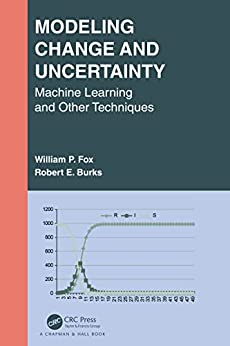
English | 2022 | ISBN: 1032062371 | 446 pages | True EPUB | 10.36 MB
Mathematical modeling is a powerful craft that requires practice. The more practice the better one will become in executing the art. The authors wrote this book to develop the craft of mathematical modeling and to foster a desire for lifelong learning, habits of mind and develop competent and confident problem solvers and decision makers for the 21st century. This book offers a problem-solving approach. The authors introduce a problem to help motivate the learning of a particular mathematical modeling topic. The problem provides the issue or what is needed to solve using an appropriate modeling technique. Then principles are applied to the problem and present the steps in obtaining an appropriate model to solve the problem. Modeling Change and Uncertainty: Covers both linear and nonlinear models of discrete dynamical systems. Introduces statistics and probability modeling. Introduces critical statistical concepts to handle univariate and multivariate data. Establishes a foundation in probability modeling. Uses ordinary differential equations (ODEs) to develop a more robust solution to problems. Uses linear programming and machine learning to support decision making. Introduces the reality of uncertainty and randomness that is all around us. Discusses the use of linear programing to solve common problems in modern industry. Discusses he power and limitations of simulations. Introduces the methods and formulas used in businesses and financial organizations. Introduces valuable techniques using Excel, MAPLE, and R. Mathematical modeling offers a framework for decision makers in all fields. This framework consists of four key components: the formulation process, the solution process, interpretation of the solution in the context of the actual problem, and sensitivity analysis. Modeling Change and Uncertainty will be of interest to mathematics departments offering advanced mathematical modeling courses focused on decision making or discrete mathematical modeling and by undergraduate, graduate students and practitioners looking for an opportunity to develop, practice, and apply the craft of mathematical modeling. Table of Contents 1. Perfect Partners: Combining Models of Change and Uncertainty with Technology 2. Modeling Change: Discrete Dynamical Systems (DDS) and Modeling Systems of DDS 3. Statistical and Probabilistic Models 4. Modeling with Probability 5. Differential Equations 6. Forecasting with Linear Programming and Machine Learning 7. Stochastic Models and Markov Chains 8. Linear Programming 9. Simulation of Queueing Models 10. Modeling of Financial Analysis 11. Reliability Models 12. Machine Learning and Unconstrained Optimal Process Dr. William P. Fox is currently a visiting professor of Computational Operations Research at the College of William and Mary. He is an emeritus professor in the Department of Defense Analysis at the Naval Postgraduate School and teaches a three-course sequence in mathematical modeling for decision making. He received his Ph.D. in Industrial Engineering from Clemson University. He has taught at the United States Military Academy for twelve years until retiring and at Francis Marion University where he was the chair of mathematics for eight years. He has many publications and scholarly activities including twenty plus books and one hundred and fifty journal articles. Colonel (R) Robert E. Burks, Jr., Ph.D. is an Associate Professor in the Defense Analysis Department of the Naval Postgraduate School (NPS) and the Director of the NPS' Wargaming Center. He holds a Ph.D. in Operations Research from the Air Force Institute of Technology. He is a retired logistics Army Colonel with more than thirty years of military experience in leadership, advanced analytics, decision modeling, and logistics operations who served as an Army Operations Research analyst at the Naval Postgraduate School, TRADOC Analysis Center, United States Military Academy, and the United States Army Recruiting Command. Other book...



